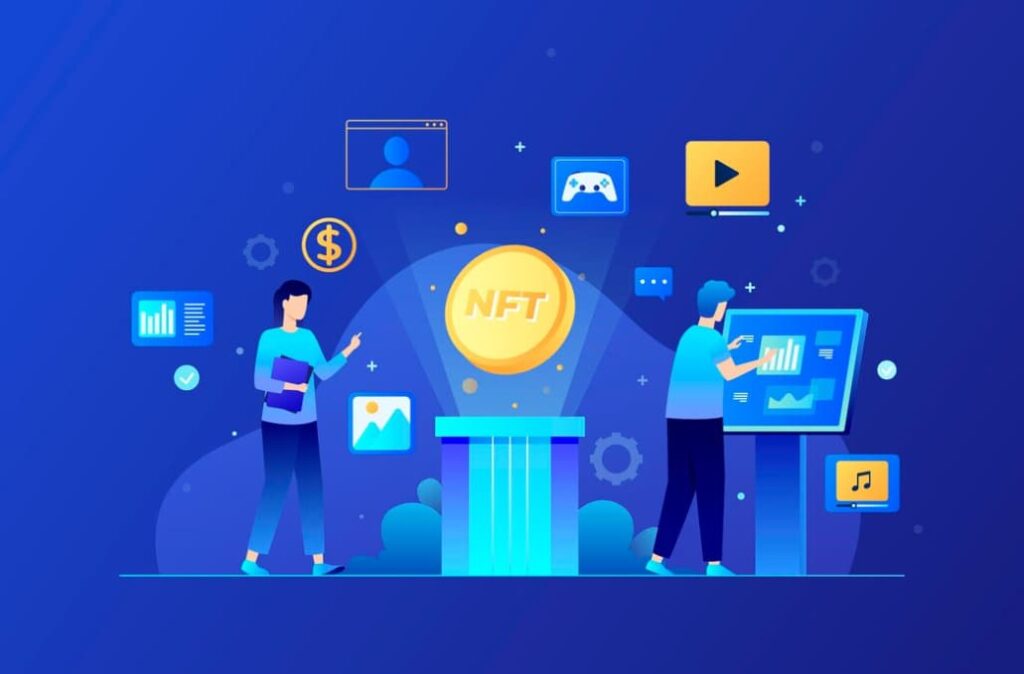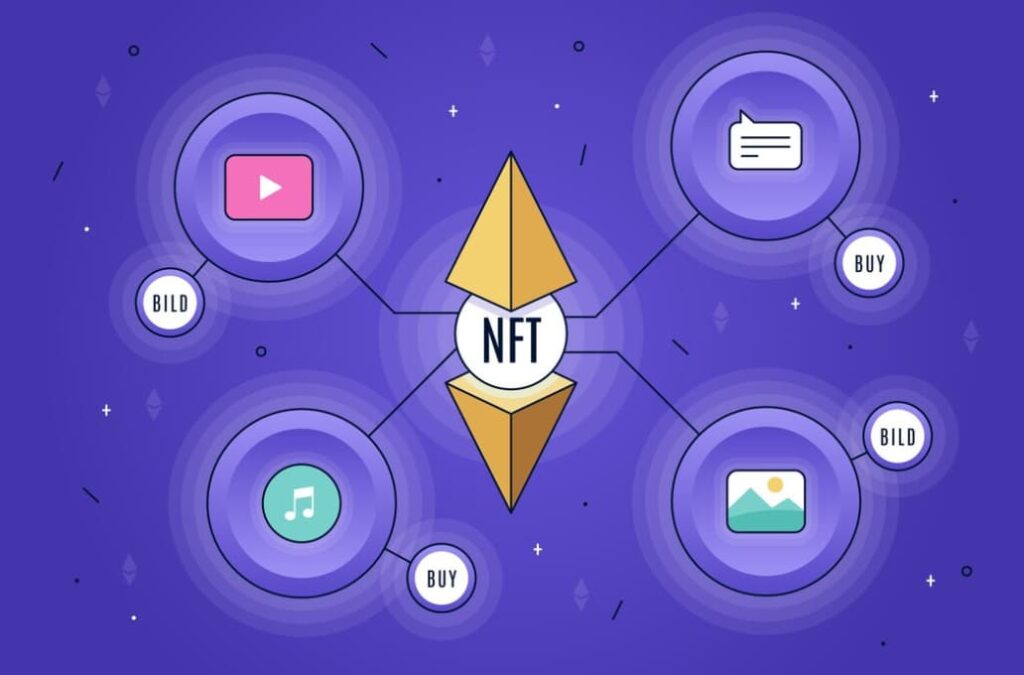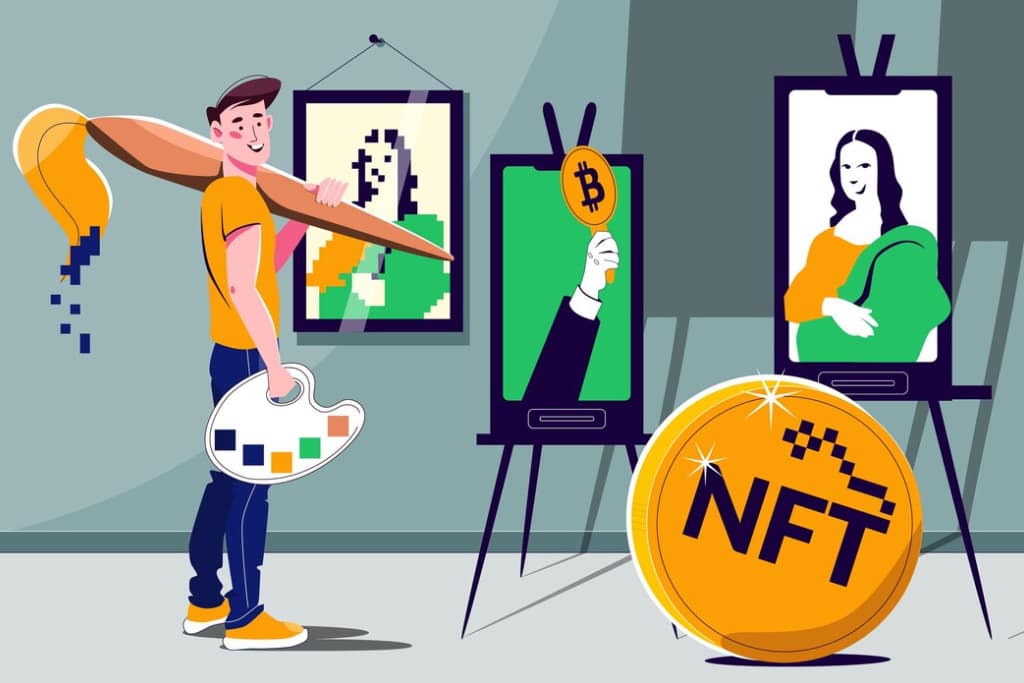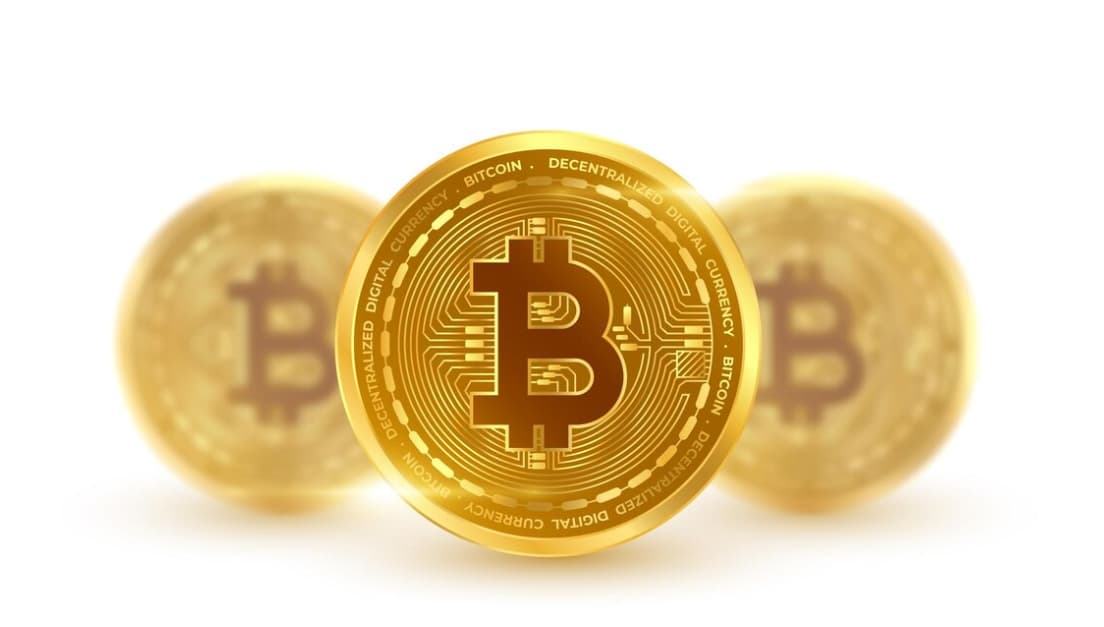Non-Fungible Tokens (NFTs) are currently at the forefront of digital conversation, propelled into the limelight not only by their connection to high-stakes sales and headline-grabbing digital heists but also by their solidification as a staple in the digital zeitgeist. Beyond the realms of digital art, tunes, sartorial digital creations, and virtual worlds, NFTs are also pioneering physical asset tokenization, carving out a significant, innovative space within the broader crypto domain. Let’s delve into the core principles and current applications of NFTs in this dynamic digital era.
What is an NFT?
The concept of fungibility is foundational when exploring the world of NFTs. Fungibility involves items that are interchangeable and identical in value—for instance, how traditional currency operates, with every ten-dollar bill being substitutable with another of the same denomination.
Conversely, non-fungible items boast a unique stature, making them irreplaceable and valuably distinct. This is where NFTs make their mark, as each token is a unique digital asset that defies duplication and interchangeability. The value of NFTs is as diverse as their form, with each token possessing its own digital identity and worth, solidified and authenticated on the blockchain through sophisticated cryptographic security. This digital ledger not only confirms the singularity of each NFT but also ensures its provenance and ownership are transparent and tamper-proof.
NFTs can be regarded as the digital representation of an asset, whether tangible or virtual, or as a standalone digital entity. For instance, artists have the ability to digitize their tangible artwork, such as paintings or sculptures, and offer them for sale on specialized NFT marketplaces. Presently, NFTs are widely recognized for their use in areas such as gaming, digital artistry, music, sports memorabilia, and virtual worlds, but the scope for their application is far broader and ripe for discovery.
Key Attributes Defining Non-Fungible Tokens (NFTs)

Distinctiveness and Scarcity
NFTs are inherently distinctive, allowing creators to issue a finite batch, thereby preserving their rarity and enhancing their value. This is evident in acclaimed NFT series like CryptoPunks and Bored Ape Yacht Club, each series featuring 10,000 individual NFTs.
Verification of Ownership
Acquiring an NFT grants the buyer certain entitlements over the digital property, typically including proprietary rights, though this can vary. The blockchain’s architecture enables the recording and public verification of digital asset ownership, a feature that’s also applicable to tangible NFTs.
Permanence
The data encoded on blockchain tokens is nearly impervious to alteration or compromise, thanks to the stringent security measures employed by developers. This imparts a level of transparency and reliability to the NFT technology.
Customizability
NFTs are inherently programmable, boasting attributes such as embedded royalties or dynamic features defined within smart contracts. They’re also at the forefront of pioneering applications in the decentralized finance (DeFi) sector.
Exploring the Realm of Tangible NFTs
NFTs are widely recognized in the digital art scene, yet their scope extends far beyond, encapsulating the digital representation of concrete assets ranging from sports memorabilia and historical artifacts to various consumer products. These tokens serve as a digital proof of ownership that can be tied to physical objects, offering a bridge between digital and tangible worlds. Essentially, a physical NFT is a unique digital token intrinsically linked to an actual item.
A notable instance is the initiative by renowned digital artist Beeple, who has paired his digital pieces with physical items, complete with high-definition screens for artwork display and verifiable authenticity certificates—adding tangible value to the digital token. Ultimately, physical NFTs maintain the tradability of standard NFTs while also allowing for the redemption of the physical article they represent. Grasping the essentials of physical NFTs is crucial, and in this context, understanding Literary NFTs is equally important for writers.
Example of Physical NFT
As the concept of physical NFTs continues to evolve, several innovative and successful implementations are emerging, indicating the untapped potential and expanding boundaries of NFT technology within the cryptosphere.
- Adidas Originals: In 2021, a prominent German sportswear brand took a leap into the metaverse by launching a collaborative NFT venture with the Bored Apes Yacht Club, an endeavor that has witnessed its NFTs fetch staggering sale prices and captivate high-profile personalities such as Jimmy Fallon, Eminem, and Paris Hilton. The purchasers of these branded originals have the privilege of claiming an array of exclusive physical items, from hoodies and tracksuits to beanies.
- RTFKT Studios: RTFKT Studios, a virtual sneaker brand that recently joined forces with Nike, has been pioneering the integration of physical NFTs. This innovative approach empowers owners of NFTs to claim actual sneakers by treating the NFT as a “blueprint” for the physical product. RTFKT has been at the forefront of blending digital and physical realms, working collaboratively with crypto artists to craft a diverse array of physical merchandise.
- WENEW: Established by the innovative digital artist Mike Winkelmann, also recognized as Beeple, WENEW is an NFT platform focusing on the sale of “iconic” historical moments and cultural milestones, such as Andy Murray’s 2013 Wimbledon victory. Alongside the digital tokens, collectors have the opportunity to receive a physical museum-quality screen showcasing their NFT.
- GAP: GAP, the fashion retailer, has introduced its inaugural NFT collection featuring exclusive physical hoodies. This collaboration with the artist Brandon Sines, known for Frank Ape, has resulted in non-fungible tokens. To acquire a collectible Frank Ape hoodie, enthusiasts need to accumulate tokens at Common and Rare levels, as outlined by GAP.
- Mattel: Renowned toy manufacturer Mattel has ventured into the NFT space in collaboration with entrepreneur Gary Vaynerchuck. They have introduced a tangible UNO deck showcasing the signature characters from Gary Vaynerchuk’s VeeFriends NFT collection. Mattel hints at potential future releases, expressing its commitment to further exploring the “intersection between gaming, digital art, and collectability.”
Connecting NFTs and Physical Items
If you’re intrigued by the concept of linking an NFT to a physical item, the process may seem complex, but we’ve simplified it for you. Let’s use a physical painting as an example.
- Begin by creating a ‘digital twin’ of the artwork, easily achieved by capturing a photo, preferably with a professional camera. Once digitized, ensure that all relevant information (metadata) such as size, technique, author details, and more is accurately attached to the virtual file;
- Next, choose a reputable NFT marketplace like OpenSea to mint your painting. For Ethereum-based tokens, smart contracts play a crucial role in assigning ownership and managing NFT transferability. This coding ensures that all information related to the digital asset is securely stored on the blockchain, effectively linking your digitized painting, or NFT, to its real-life counterpart;
- Visible links, often facilitated by QR codes or NFC tags, play a vital role in connecting the digital and physical realms. Notably, companies like Nike have explored this concept by incorporating unique identifiers in digital shoes, linking them to their physical counterparts;
- Keep in mind that once an NFT is minted, it can’t be modified. Therefore, meticulous attention to detail, including coding, is crucial before minting to successfully link digital and physical assets.

Advantages of Physical NFTs
Delving into the world of physical NFTs reveals a myriad of benefits that extend beyond the realm of digital ownership. The primary allure lies in the ability to establish and verify authenticity and provenance, offering a robust solution in a market rife with counterfeit challenges valued at over $500 billion. Leveraging blockchain technology ensures that information linked to both virtual and physical assets remains immutable, creating an unforgeable data trail that instills trust among buyers and sellers.
An additional significant advantage involves the elimination of middlemen from transactions, fostering a sense of liberation and financial rewards for both buyers and sellers. This decentralized approach not only streamlines the buying process but also empowers participants in the NFT ecosystem.
Moreover, the potential for recurring royalties adds another layer of appeal to physical NFTs. Sellers can enjoy ongoing benefits as their assets change hands, receiving a cut with each transaction. This innovative feature reshapes the traditional dynamics of ownership and rewards, offering a continuous revenue stream for creators in the evolving landscape of NFTs.
Pitfalls in Linking Physical Assets to NFTs
While the integration of physical assets with NFTs holds promise, it brings along its own set of challenges and drawbacks. Foremost among these is the potential for legal complications. Buyers of physical NFTs may face hurdles in accessing the actual copyright of the asset, limiting their rights to distribute, share, or publicly display it in certain instances.
Another concern revolves around the dissociation of physical assets from their corresponding NFTs. Unscrupulous practices could involve selling an NFT to one buyer while separately selling the physical item to another, effectively decoupling them without a clear link to the non-fungible token.
The landscape is further complicated by issues such as fake sales, unreliable sellers, and the looming threat of hacks. Although marketplaces are actively working to address these challenges, the road ahead is undoubtedly long, and there’s much ground to cover in fortifying the security and credibility of the integration of physical assets with NFTs.
Conclusion
The versatility of NFTs is evident, showcasing a broad spectrum of applications spanning both digital and physical realms. Although commonly linked to renowned entities like CryptoPunks, Bored Apes, or NBA Topshot collectibles, the influence of physical NFTs extends beyond the glitz to practical, everyday domains such as the supply chain. Here, blockchain technology emerges as a transformative force, offering benefits in traceability, authentication, and certification. Many proponents highlight the integration of non-fungible tokens with physical assets as a robust and compelling use case, underscoring the strength of NFTs and blockchain technology in reshaping various aspects of our tangible world.




